
怀谷酒店场地位于莫干山中麓,基地狭长,延展于山坳一侧,背靠竹海,面向农田,四周青山环绕,一条山溪在谷底淌过。基地自然条件出众,并且远离公路,需沿碎石小路步行数十米才能到达,一路缓坡向上,直抵山坳最深处。
The site of Huaigu Hotel is located in the middle of Mogan Mountain. The site is long and narrow, extending on one side of the valley, backed by the bamboo sea, facing the farmland, surrounded by green mountains, and a stream flows through the bottom of the valley. The site has excellent natural conditions and is far away from car traffic. One needs to walk tens of meters along the gravel path to reach it. It has a gentle slope up all the way to the deepest part of the valley.

场地的风景
场地本身狭长,宽度10——15米不等,一路缓坡向上。场地东西两侧有着完全不同的自然特质,一侧开阔壮美、一侧静密宜人,给人带来完全不同的体验。场地东侧紧贴山坡上的竹海,竹枝似乎可以直触碰身体。而西侧是相对开阔的农田,脚下有山溪流过,远处是群山的层层剪影。我们看过场地后最初的直觉是这两边的“风景”是场地最吸引人的特质,而我们也开始思索怎样能把这些风景带入每间客房,怎样挖掘并塑造竹海、溪流、农田的景观特质,创造不一样的风景。
Site with Sceneries
The site itself is long and narrow, with a width ranging from 10 to 15 meters, and a gentle slope all the way up. The east and west sides of the site have completely different natural characteristics, one side is wide and magnificent, and the other side is quiet and pleasant, bringing a completely different experience to people. The east side of the site is close to the bamboo sea on the hillside, and it seems the bamboo branches are close enough to touch the body. There is relatively open farmland in the west side, with mountains and streams flowing underneath, and silhouettes of mountains in the distance. After seeing the site, our initial intuition was that the “scenery” on both sides is the most attractive feature of the site, and we also began to think about how to bring these scenery into each guest room, how to excavate and shape the landscape characteristics of the bamboo sea, stream, and farmland, to create a different scenery.
▽改造前场地
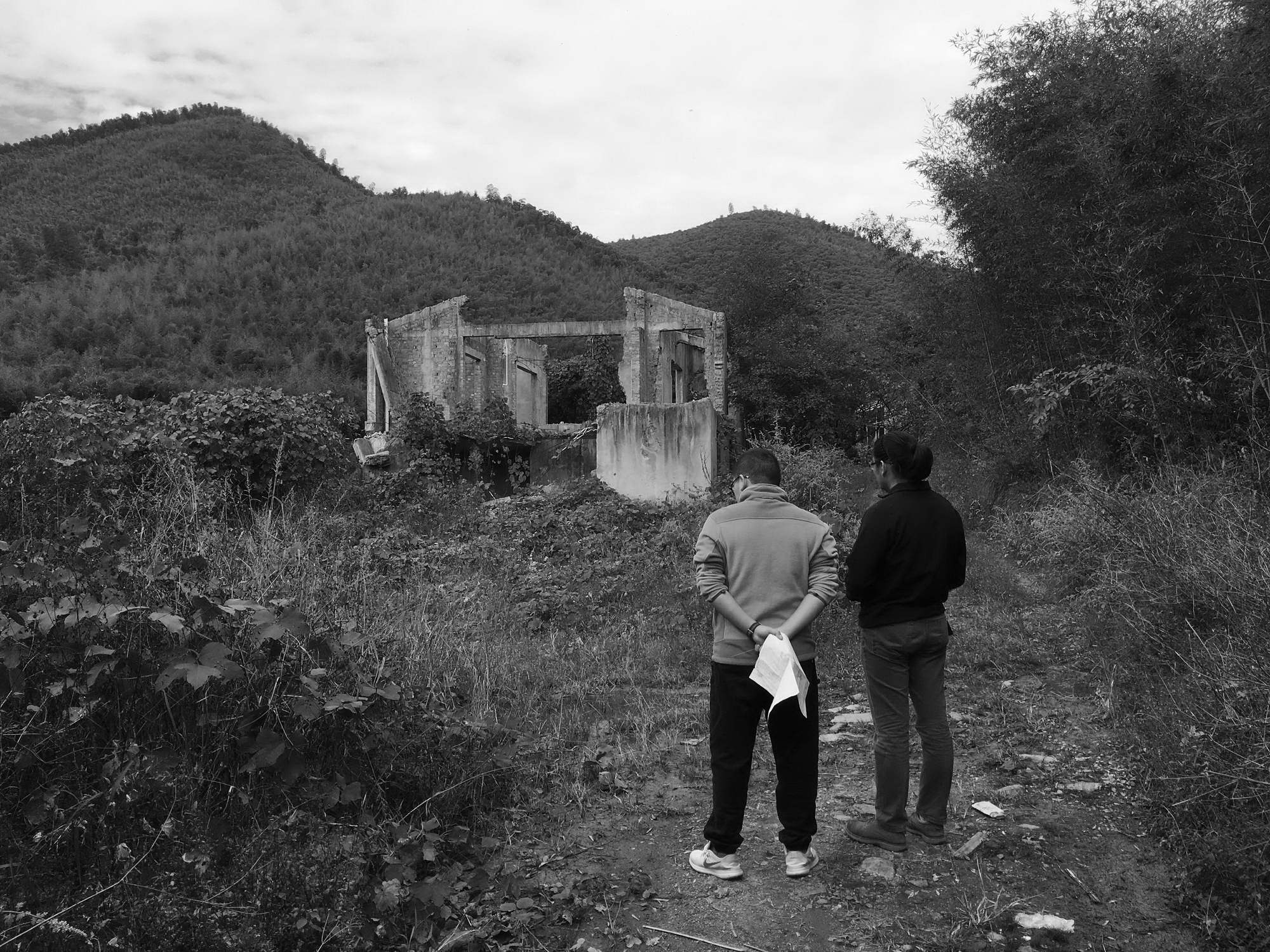
▽改造前后对比

狭长的地块本身决定了需要有很长的步行公共空间把客人送进每一间房,我们遇到的问题是:
1如何让每间客房的住客都能体验到东西两侧的不同场地特质?
2如何能让公共流线与客房之间互不打扰,甚至是让人意识不到互相的存在?
3以什么方式将周边的风景引入流线和公共区域?
The long and narrow site determines the need for a long pass way to send guests into each room. The problems we encountered are:
1 How to make each guest room experience different characteristics from the east and west sides?
2 How to separate public circulation and guest rooms so that people will not disturb, or even realize the existence of each other?
3 In what way is the surrounding scenery introduced into the circulation and public areas?
有风景的客房
酒店共设计了35间客房,建筑布延续临近山村的格局,若干栋建筑随山就势,散落在狭长的场地之中。为了让每间客房都同时拥有山谷两侧的风景,我们采用了一梯两户单元式布局,七个单元沿山谷高低依次展开,每栋有五间格局不同的客房。首层两间客房附带临山一侧的竹林小院,坐在院中可静享山林野趣;顶层两间客房附带屋顶风景露台,站在屋顶,背靠竹海可远望群山;中间平层户则设计了嵌入建筑中的观景阳台。通过小院、露台、阳台这些风景的容器,我们希望每一间客房的入住客人都可以独享一份自己的“风景”。
Room with a View
The hotel has 35 guest rooms in total. The architectural layout continues the pattern of the adjacent mountain village. Buildings are scattered in the long and narrow site. In order to provide each guest room the scenery on both sides of the valley at the same time, we adopted a unit-based system, seven units spread out along the valley, and each building has five guest rooms with different layouts. The two rooms on the first floor are equipped with a small bamboo courtyard on one side of the mountain, where you can sit in and enjoy the tranquility of the mountains and forests. The two rooms on the top floor are equipped with a roof-view terrace, standing on the roof, backed by the bamboo sea to see the mountains. The room at the middle floor is designed with viewing balconies embedded in the building. Through small courtyards, terraces, and balconies, we hope that every guest in each room can enjoy their own "scenery".
▽群山环绕中的怀谷酒店

▽群山环绕中的怀谷酒店
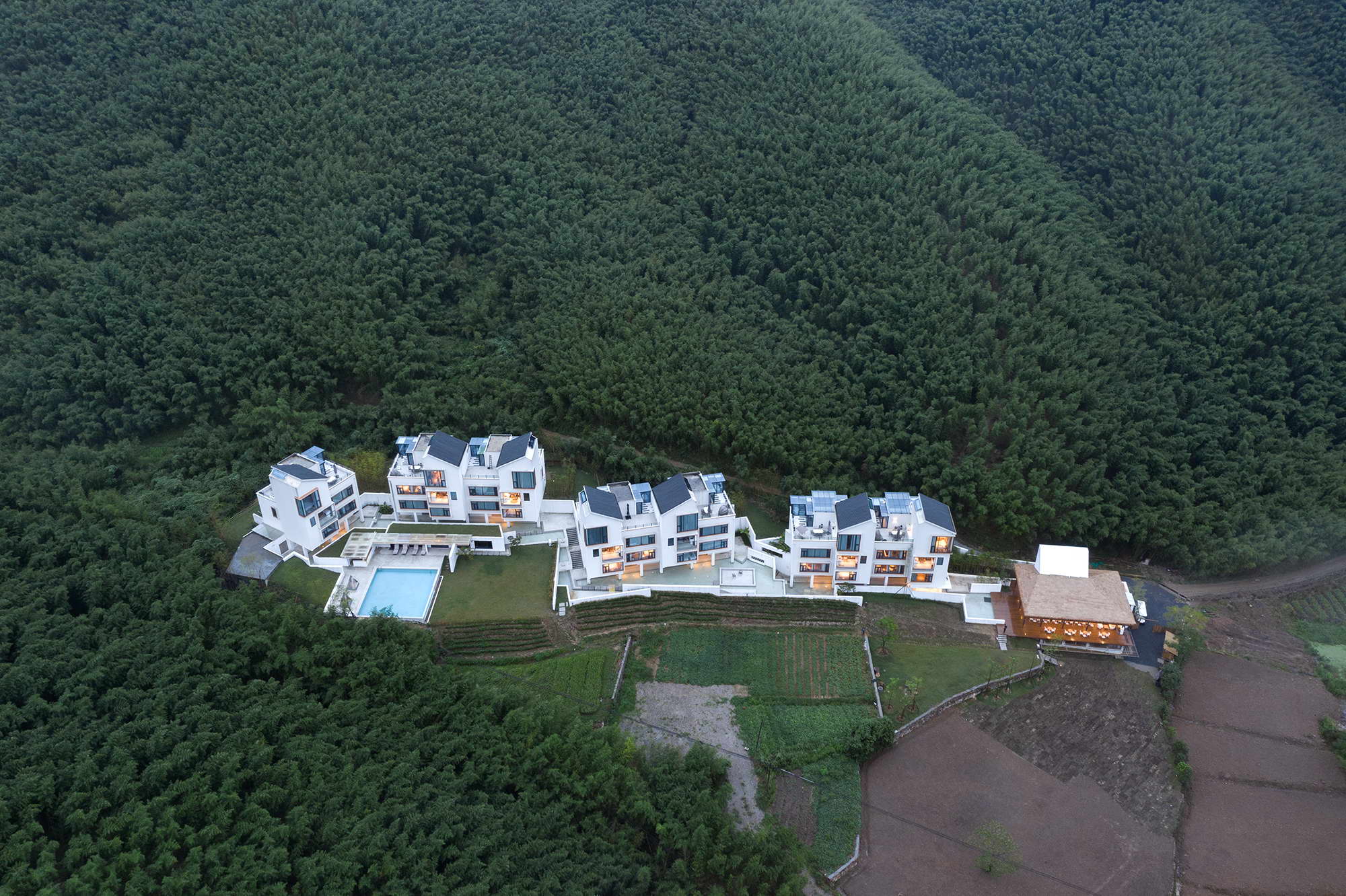
▽背靠竹海的建筑

▽面向风景的客房

风雨廊的启发
在周边水乡中看到的风雨廊给了我们很大启发,风雨廊中呈现出了一种既是内部,又是外部的空间:
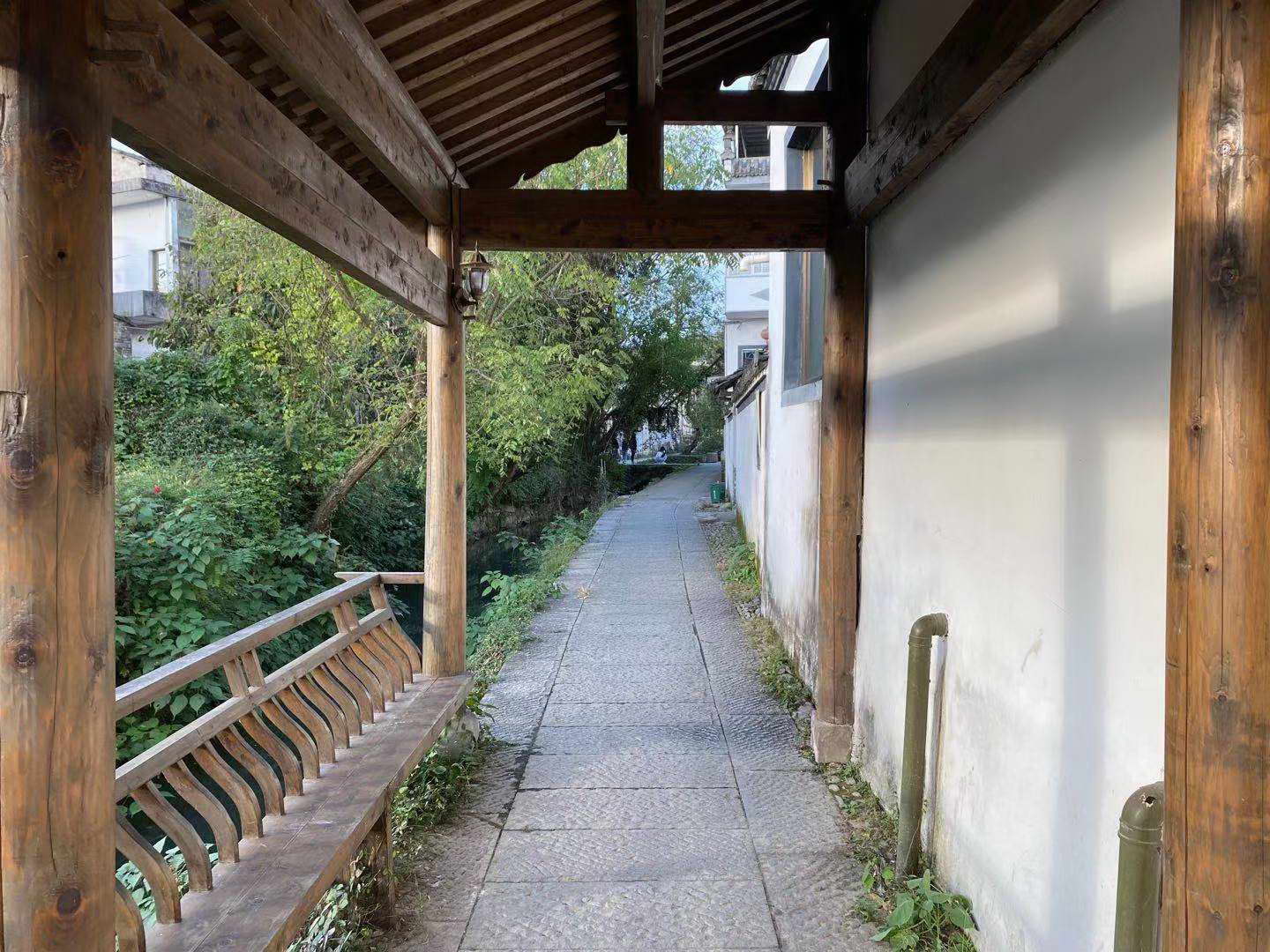
1 廊子本身将公共的街道藏入檐下,从形态的角度来看,街道进入了建筑的“内部”。
2 然而街道却是“外向”的,一方面街道本就是完全的室外,另一方面廊子沿水的开口给街道带来了强烈的方向性,其中的行人都自然地着看向外侧。
3 街道和住宅虽然紧贴彼此,但人在“内部”行走,视线被“外部”吸引,所以几乎不会意识到更内侧住宅的存在。
4 风雨廊带来了一种“游”的体验,屋檐、地面和檐柱所形成的画框将外侧风景框入其中,人在其中前行,风景随之改变。
Inspirations from the Local Covered Walkways
The local covered walkways we saw in the surrounding water villages gave us inspiration. It presents a space that is both internal and external:
1.The local covered walkways hides the public street under the eaves, and the street enters the "inside" of the building.
2.However, the street is “outward”. On the one hand, the street is completely outdoor. On the other hand, the opening of the porch along the water brings a strong directionality to the street, and the pedestrians in it naturally look outward.
3.Although the streets and houses are close to each other, people are walking "inside" and their eyes are drawn to "outside", so they hardly realize the existence of those inner side houses.
4.Wind and rain corridor brings a kind of "wandering" experience. The view formed by the eaves, ground and eave pillars frame the outside scenery into the corridor, and the scenery keeps changing as one walking along the pathway.
游廊的风景
受到了水乡风雨廊的启发,我们探索并设计了一种与建筑和地形紧密结合的线性公共空间,将其嵌入建筑底层形成建筑“内部”的景观连廊。同时将原有山谷的溪水引入建筑之中,流入底层骑楼庭院。水面随地形变化与建筑一起层层跌落,流水的引入让庭院从抽象的空间成为生动的场所。跌落的水流、溅起的水花和延绵的水波激发了人不同感官的体验潜能。溪水撑开庭院,将群山揽入院中,连廊与庭院一起模糊了建筑内外的边界。在廊中前行,庭院扭转开合,群山、竹海、农田,风景随之变换, 连廊提供了一种看风景的角度,同时也创造了独特的风景。
Scenery inside the Covered Walkway
Inspired by the Water Village Wind and Rain Corridor, we explored and designed a linear public space system that is closely integrated with the architecture and topography, and embedded it in the ground floor of the building to form a courtyards inside the building. At the same time, the stream of the original valley is introduced into the building and flows into the courtyard of the arcade on the ground floor. The stream falls down along the change of terrain, which makes the courtyards become a vivid place other than abstract spaces. Ripples and splashes stimulate the potential of different senses. The stream enlarges the courtyard, and encloses the mountains into it, and the boundary between the inside and outside of the building is blurred by the corridor and courtyard. Moving along in the corridor, the courtyard twists and opens and closes, with the changing view of mountains, Bamboo Sea, and farmland. The corridor creates not only construct “sceneries”, but also become a unique scenery itself.
▽嵌入建筑底层的游

▽引溪水入游廊

▽廊下的水庭院
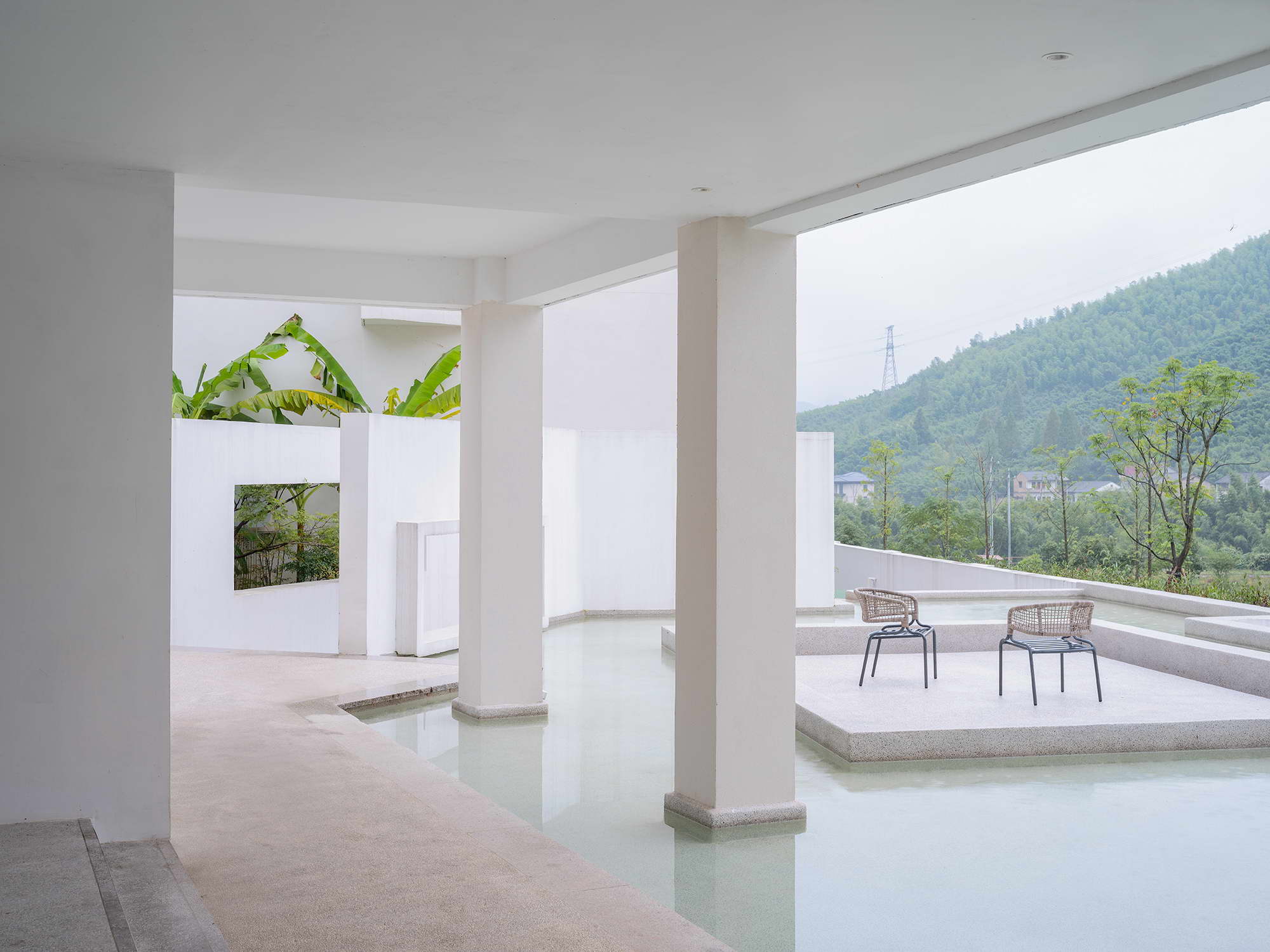
▽游廊中远眺风景

▽水庭院与建筑交织
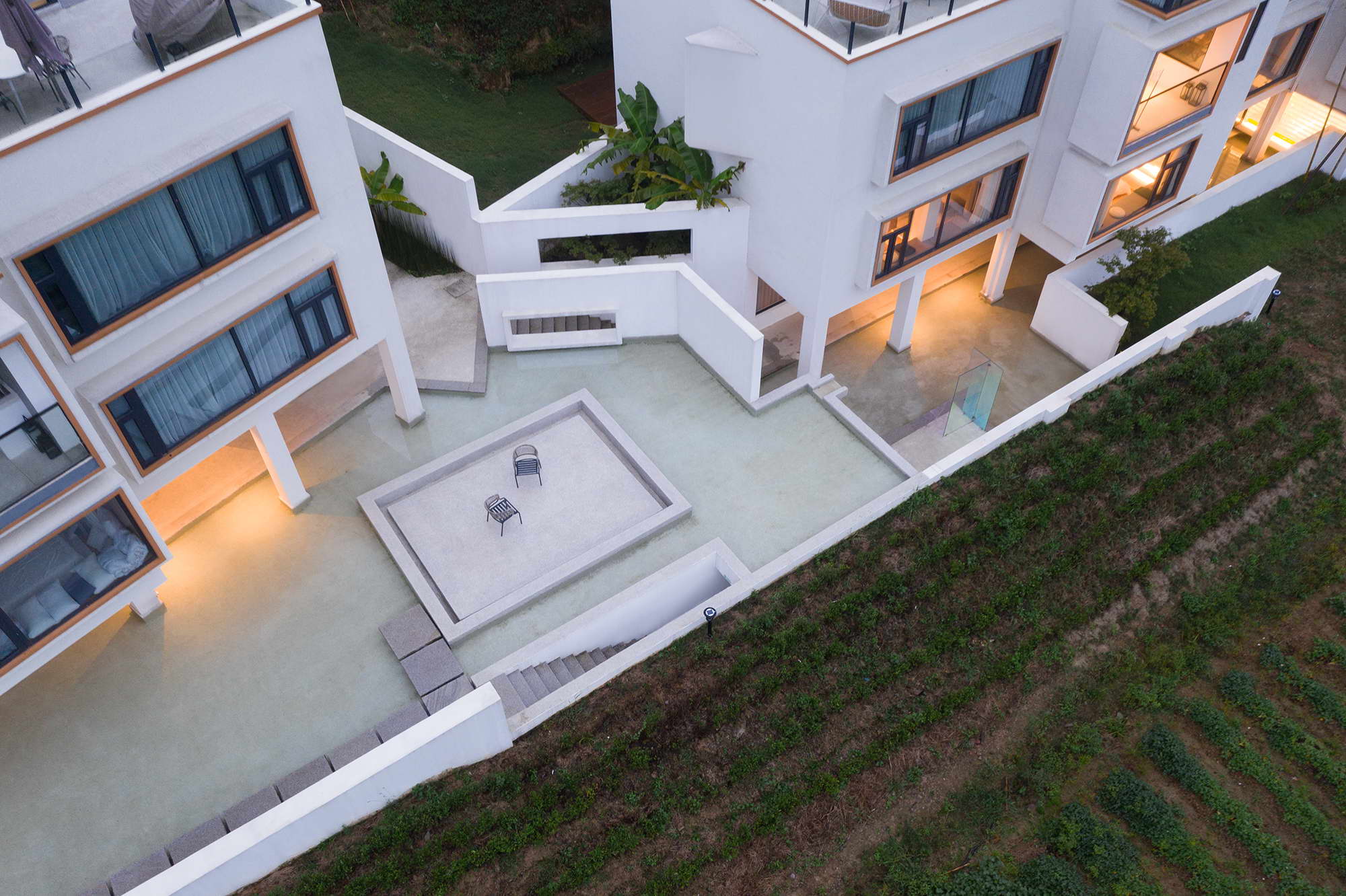
游廊不仅控制了视线的方向,更是建立了身体与风景之间的联系,它包裹着身体,建构了人对于“内”和“外”归属上的认知。“内”和“外”并不是一直不变的,而是随着人的前行不断切换,一会还在风景之中,一转后却又突然进入廊下,从建筑之中窥视风景。廊在这里塑造了一种“游”的体验,可以说,以江南宅园为基础而形成的江南园林中,“游园”与“游廊”密不可分,游园的体验是在游廊中发生的,游廊的穿梭与开合塑造了人在其中所体验到的风景。因此在本来开阔的山野中,我们借助建筑与景墙围合出一个“半内部”的园林般的连续游廊空间,这个空间不仅是连接酒店所客房和功能区域的枢纽,同时它又将溪水、田园、竹海,浓缩到其中,人在其中上下穿行,获得了一种江南园林中才有的游园体验。
The covered walkway not only controls the direction of the sight, but also establishes connections between body and landscape. It wraps the body and constructs people's cognition of "inside" and "outside" belonging. "Inside" and "Outside" switch continuously as people move forward. One moment they are in the scenery, but after a turn, they suddenly enter the corridor, peek at the scenery from the inside of the building. The corridor here creates a kind of "labyrinth" experience. In traditional southern Chinese gardens, the "garden" and the "covered walkways" are inseparable. The experience of the garden takes place in the covered walkways, the circulation and the opening closing of buildings shapes the scenery that people can experience in it. Therefore, in the originally open mountains, we used buildings and scenery walls to enclose a "semi-internal" garden-like continuous covered walkways space. This space is not only a hub that connects the hotel’s guest rooms and functional areas, but also brings together the streams, water, countryside and Bamboo Sea. People will get an experience that very similar to that of in southern Chinese gardens.
▽高低错落的流水空间

▽跌落的流水

▽植物与游廊融为一体

▽游廊与风景
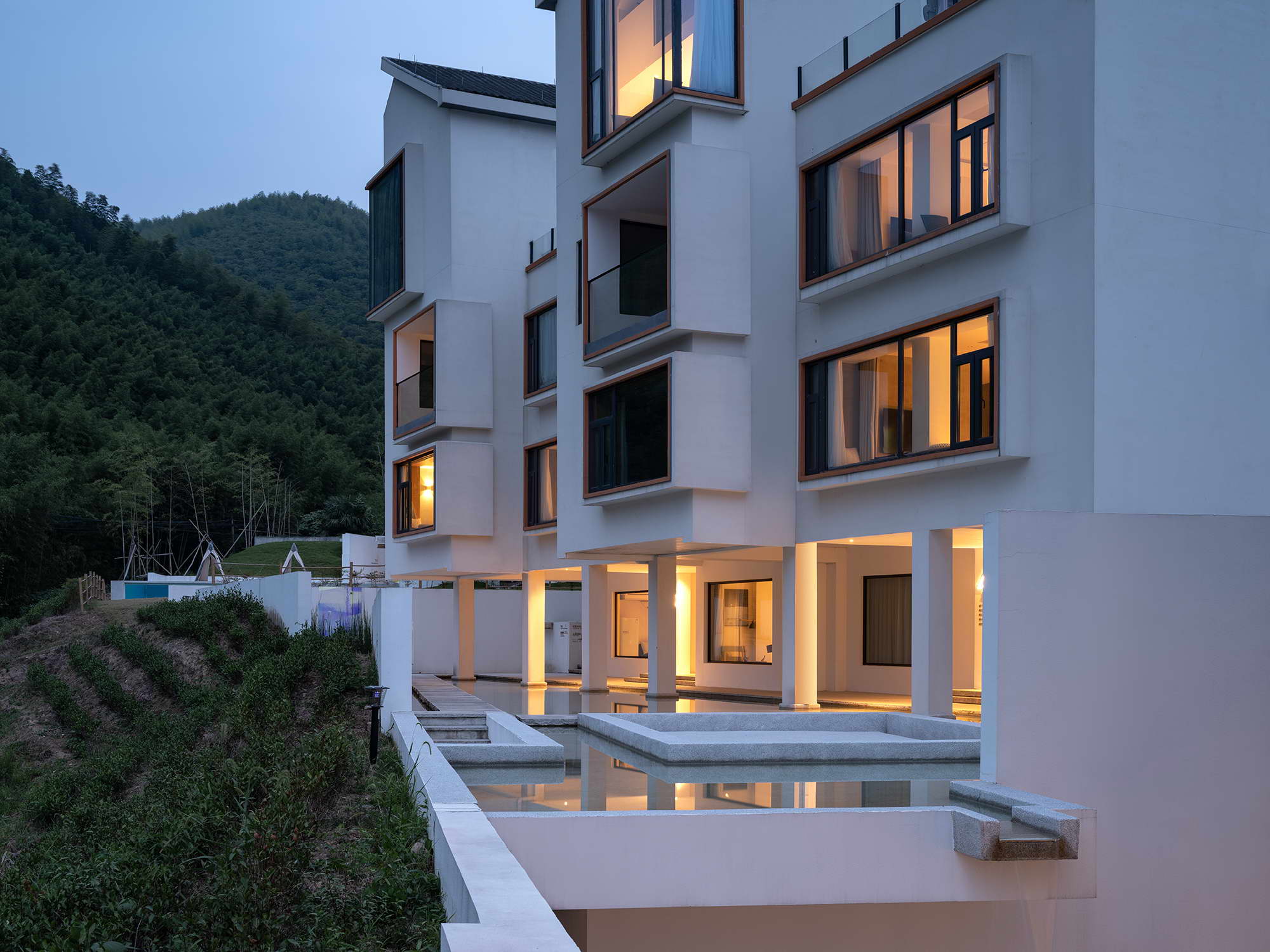
竹海与田园
餐厅位于入口处,我们创造了一个高耸的内部空间,45度的镜面天花将高窗外的竹海反射到天花板上,镜面带来的错觉让天花板呈现出无边框大面积开窗,而窗外是从两个方向伸展出的竹海,在这一过程中我们利用镜面反射错觉为室内塑造全新的风景。餐厅室外我们用轻型结构加盖了半室外的廊空间来弥补室内就餐空间的不足。远山、竹海和农田一齐汇聚到这开敞的虚空之中,让风景汇聚于一处显现。
Bamboo and Pastoral
The restaurant is located close to the entrance of the hotel. We have created a towering interior space. The 45-degree mirrored ceiling reflects the bamboo sea outside the high window onto the ceiling. The illusion brought by the mirror surface makes the ceiling present a borderless large window. In this process, we use the illusion of mirror reflection to create a brand new scenery for the interior. Outside the restaurant, we use a light frame structure to cover the semi-outdoor corridor space to make up for the lack of indoor dining space. The distant mountains, bamboo seas and farmland are all converged into this open void, allowing the scenery to converge in one place.
▽山林掩映的酒店入口

溪谷外侧的60亩田园不仅是从酒店客房看出去的风景,更是酒店重要的活动空间。随台地而上,我们在三个不同的高度平整场地,形成三处可以进行婚礼、烧烤野餐活动的室外空间。在场地最高处设置了恒温泳池,泳池面向远山与田园,两侧的檐廊将风景环入其中。
The 60 acres of countryside outside the valley are not only the scenery seen from the hotel rooms, but also an important event space of the hotel. Following the terrace, we leveled the grounds at three different heights to form three outdoor spaces for weddings, barbecues and picnics. A temperature-controlled swimming pool is set up at the top of the site.
▽山林掩映的酒店入口

▽背靠竹海的餐厅

▽雨中餐厅

▽夜幕下的餐厅

▽餐厅的廊下空间

▽餐厅内部空间

山谷边的风景
餐厅、泳池景色开阔壮美,骑楼庭院则更多呈现出围合与变化,这些强烈的体验上的对比给酒店的公共空间带来近与远、游走与停留的节奏,一条山溪更是将所有的空间与体验串联在一起,形成了让人难忘的山谷边的风景。
Rhythm of Experiences
The restaurant and swimming pool have a wide and magnificent scenery, and the arcade courtyard shows more enclosure and change. These strong contrasts of experience bring the rhythm of near and far, walking and staying to the public space of the hotel. All spaces and experiences are connected together to form an unforgettable valley side scenery.
▽面向群山的恒温泳池

▽通向泳池的小径

▽夜空下的泳池

项目图纸
▽顶平面图

▽首层平面图

▽建筑剖面图


▽建筑剖面图
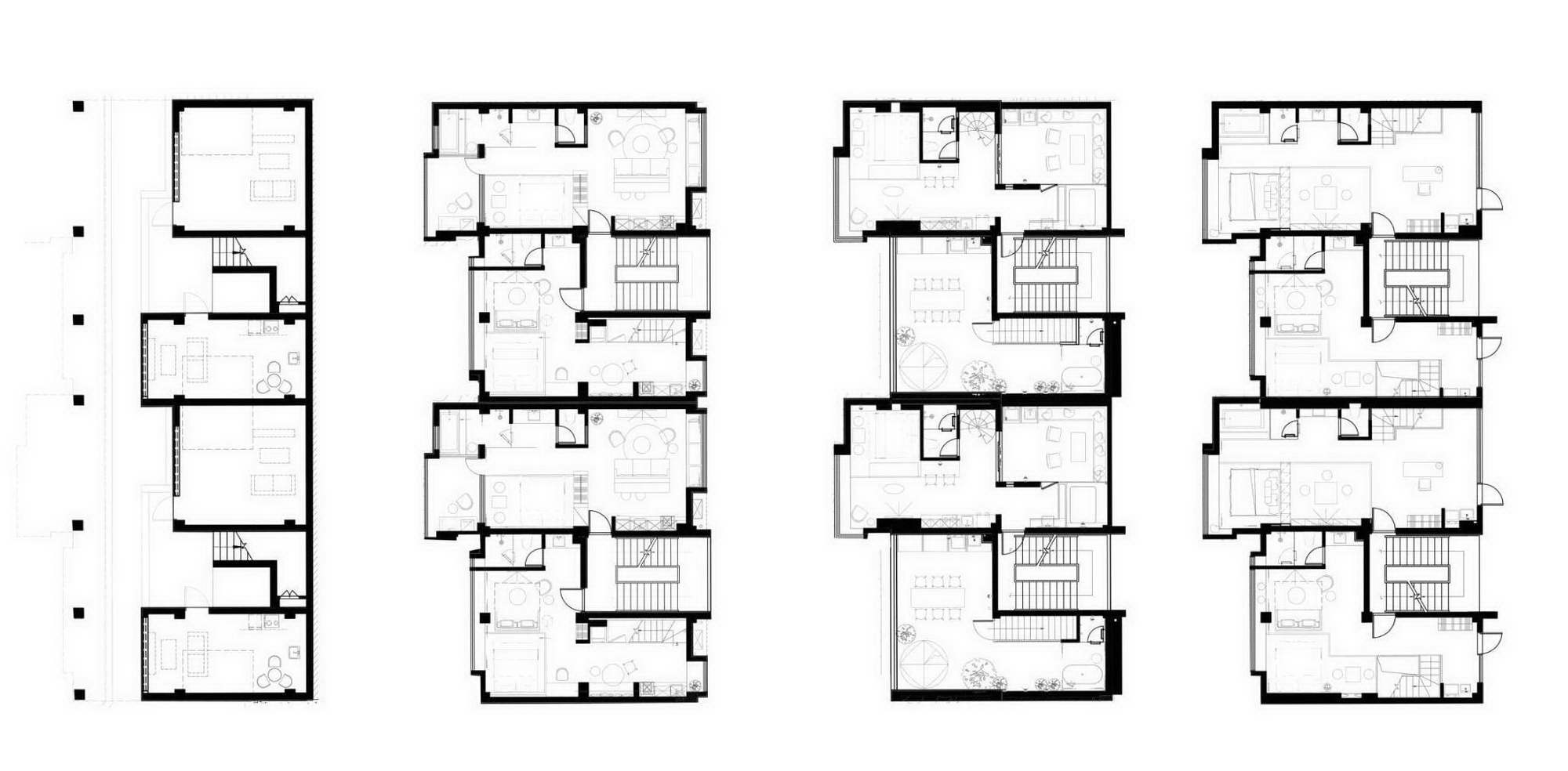
项目信息
项目名称:溪上居——莫干山原舍怀谷酒店
设计:原筑景观
公司网站: www.yzscape.com
联系邮箱: yzscape@126.com
项目设计 & 完成年份:2020年06月
主创及设计团队主持建筑师:闫明
建筑团队:闫明、李瑶、周志威、李皓、马瑞甫、汪佑霖
景观团队:闫明、李瑶、宋本明、马瑞甫、李皓、孟繁鑫、官苗苗
项目地址:浙江省德清县莫干山
建筑面积:2000㎡
摄影版权:原筑景观
摄影师:田方方、刘彪、闫明、陈竞翱
合作方结构设计:王艳芝、高雪梅
机电设计:陈璐、韩苓苓
施工设计:钟荣洁、李瑶、王巧燕、李皓
室内团队:苏州巢羽设计事务所
软装团队:朱胜萱工作室
施工团队:浙江舞阳建设工程有限公司
业主团队:仇银豪、陈竞翱、孙建忠、马联春、杨建维
客户乡伴文旅集团
Project nameUp On the Creek ——Yuanshe Huaigu Hotel in Moganshan
DesignYzscape
Websitewww.yzscape.com
Contact e-mailyzscape@126.com